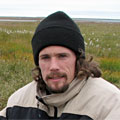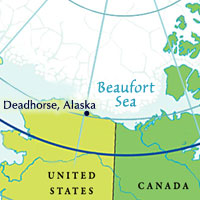Some Time to Think
DEADHORSE, ALASKA– After a very busy start to the field season, the schedule has slowed due to weather in recent days. Temperatures have warmed up into the 20s (Fahrenheit) and the ice has started to break up in some places, exposing open water to the air – I think these influences increase the water vapor in the air and generate more fog. We have had several days with delayed starts because of poor visibility and fog in the mornings. Another sign that spring may be on its way – as I write this, a snow bunting bird flew past the window over my desk, then returned and perched on the sill.
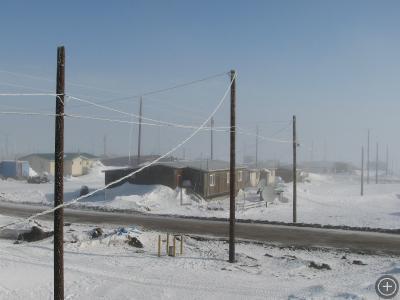
This is the view to the north from the desk in my room at the bunkhouse. The houses and power lines of Kaktovik are visible, and the fog doesn’t seem that bad, especially given the blue sky. However, this is a “sucker hole” that can trick you into thinking that visibility is good, when in fact, you happen to just be in a hole of clarity in an otherwise thick fog bank.
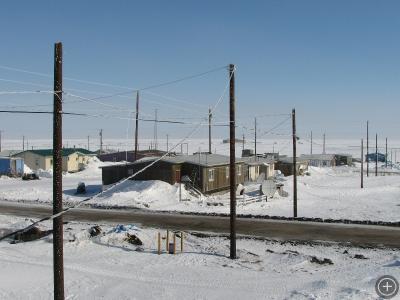
This picture is from the same perspective, an hour later. The fog has mostly lifted – now, beyond the houses, a hangar (about ¾ of a mile away) and the northern horizon of sea ice are visible.
The reductions in flight time have given me time to catch up on coursework and get some reading and thinking done. Even when the schedule is very busy, sometimes the helicopter can be a surprisingly good place to think. The pilot is obviously busy during flight, and as passengers we are always scanning the ground for bear sign – tracks, kill sites, carcasses. However, once you get into the rhythm of scanning and tracking, your mind can return to the larger concepts of the project, turn over the data you have collected so far, or move onto other questions. I suppose it is similar to any situation where you put several people into close quarters for several hours of travel – interesting conversation can come up, or people can mostly travel along in their own minds.
We have been talking recently about how to interpret some of our data in regards to polar bear diet. We have months of analysis before we can begin drawing conclusions, but the summary of our data up until now can provide suggestions. One of the reasons the polar bear diet is interesting is that it is fairly simple in comparison to the closely-related brown bear (grizzly bear). Polar bears mainly eat seals, and this is reflected in their dentition, whereas many brown bears consume a wide variety of food items, including lots of vegetation.
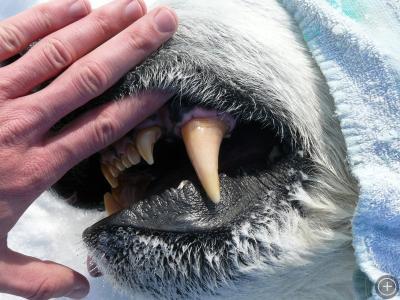
The canine and incisor teeth of an adult polar bear. Polar bears have evolved larger canines because these stabbing teeth are useful in hunting, and polar bears hunt more than most brown bears. Polar bears also have reduced molars because they eat less vegetation than most brown bears, and therefore have a reduced need for grinding teeth.

 No comments
No comments 
